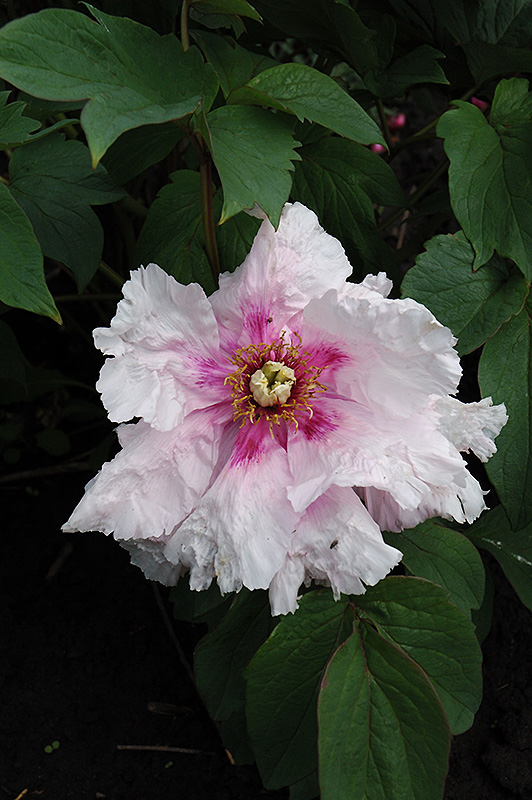Plant Finder
Companion Of Serenity Tree Peony*
Paeonia lutea 'Companion Of Serenity'
* This is a "special order" plant - contact store for details
Height: 4 feet
Spread: 4 feet
Sunlight:
![]()
![]()
Hardiness Zone: 4a
Other Names: P. delavayi, Tibetan Peony
Description:
A rare shrub with the most delightful and delicate flowers, large yet dainty, emerging soft pink and fading to white, with almost delicious crimson red rays around the centers; remember not to prune this plant as you would a perennial peony
Ornamental Features
Companion Of Serenity Tree Peony features bold lightly-scented semi-double shell pink frilly flowers with cherry red eyes and yellow anthers at the ends of the branches from mid to late spring, which emerge from distinctive rose flower buds. The flowers are excellent for cutting. It has green deciduous foliage. The narrow compound leaves do not develop any appreciable fall color.
Landscape Attributes
Companion Of Serenity Tree Peony is a multi-stemmed deciduous shrub with an upright spreading habit of growth. Its relatively fine texture sets it apart from other landscape plants with less refined foliage.
This is a relatively low maintenance shrub, and should not require much pruning, except when necessary, such as to remove dieback. Deer don't particularly care for this plant and will usually leave it alone in favor of tastier treats. It has no significant negative characteristics.
Companion Of Serenity Tree Peony is recommended for the following landscape applications;
- Hedges/Screening
- General Garden Use
Planting & Growing
Companion Of Serenity Tree Peony will grow to be about 4 feet tall at maturity, with a spread of 4 feet. It has a low canopy. It grows at a slow rate, and under ideal conditions can be expected to live for approximately 20 years.
This shrub does best in full sun to partial shade. It does best in average to evenly moist conditions, but will not tolerate standing water. It is not particular as to soil pH, but grows best in rich soils. It is quite intolerant of urban pollution, therefore inner city or urban streetside plantings are best avoided. Consider applying a thick mulch around the root zone in winter to protect it in exposed locations or colder microclimates. This is a selected variety of a species not originally from North America. It can be propagated by division; however, as a cultivated variety, be aware that it may be subject to certain restrictions or prohibitions on propagation.
* This is a "special order" plant - contact store for details
